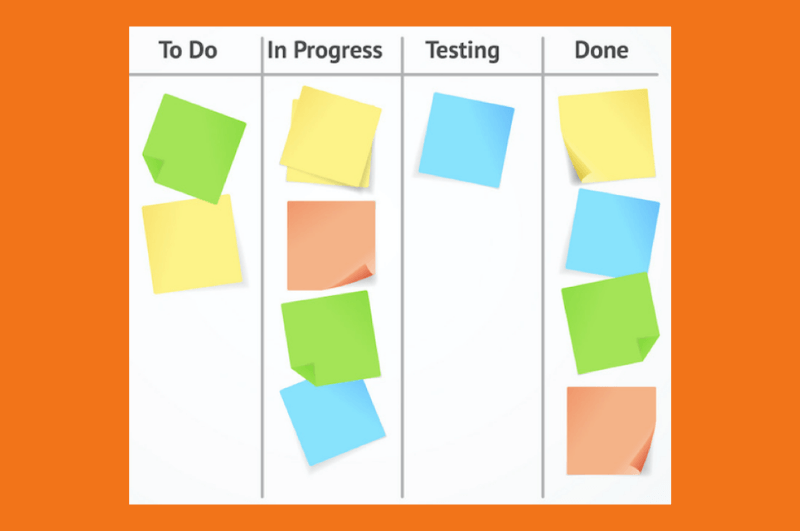Managing your time when you work from home is a significant challenge for many people. However, it’s possible to know how to plan your day and stick to it, no matter what! The following seven tips will help you break out of your rut and create a work-from-home routine that makes the most sense for you and your career. Master these techniques to get the work-life balance you crave!
7 Ways How to Plan Your Day and Stick To It
After careful research, we discovered a seven-step process that can help improve your work-from-home routine and help you build your career in exciting ways. Note that you can adjust these techniques to suit your job duties and career goals.
1. You Need to Know How Much Time You Got
Knowing how much time you have for work each day is one of the most important work-from-home hacks we can suggest. Time management focuses heavily on maximizing your work hours and doing what you can to plan specific activities based on your time and schedule.
For example, if you have data entry tasks that you know will take you at least four hours to finish, you need to find time throughout your day to handle these tasks. If you only have two hours available for this work in your day, you may need to prioritize other tasks that fit within that time.
Break down your tasks based on their importance and urgency. If possible, do important and urgent tasks first, then move to important and non-urgent ones next. Always try to get important tasks done before unimportant ones. Then, move on to important, urgent tasks before unimportant and non-urgent steps.
Pro Tip: Schedule your day into two-hour chunks based on the Pomodoro Technique. This method lets you work for 25-minute periods with five-minute breaks (a Pomodoro), with 15-30 minute breaks between each four-Pomodoro work period. Studies find this method enhances work effectiveness and efficiency.

2. You Need to Understand How Certain Long Tasks Will Take You
Time management techniques focus on how much time is available to you and how much time each task takes you. Understanding how long each step in your work day takes helps you learn how to plan your day and stick to it more effectively by minimizing wasted time.
For example, scheduling a three-hour block to handle tasks that will only take two hours wastes one hour of your day and may cause you to lose focus. It’s good to have extra time in your day, but too much may cause a lack of direction that sabotages your effectiveness.
When working on each task, how long you take to finish and calculate things like downtime to gauge a task’s actual time consumption. Then, you can schedule your day using these times, such as choosing two-hour blocks to handle a task that is likely to require 1.5 to 1.75 hours to finish. The extra 15-30 minutes give you some spare time to plan your next task or take a longer break.
3. Routine is Underrated
People creating a work schedule may not understand just how beneficial a routine is to their work day. Creating a routine is a powerful scheduling tool that uses the mind’s love (and need) of regular routines to produce better overall results with your tasks.

Studies have found that the mind loves routine because it cycles to repeated behaviors and unconscious patterns throughout your day. Creating regular routines helps reward the mind’s desire for these routines and can help make it easier to plan your work day more effectively.
For example, you can wake up at the same time every day, spend the first few hours of your day attending to the same tasks, and schedule your day based on these repeated activities. It might seem predictable or boring initially, but it can help you quickly adapt to just about any schedule by enforcing a rewarding routine on your body and mind.
4. Write the Tasks Down and Prioritize It
When learning how to plan your day and stick to it, writing a task list and prioritizing each duty can help make your day easier. It also helps make you more efficient, gets you to do what truly matters, and creates more impact in your day by getting your most important tasks first.
For example, you can schedule brain-intensive duties during hours you feel more focused, such as the early morning or just after lunch. Don’t forget to prioritize urgent tasks over non-urgent ones to ensure you finish these vital duties first and to avoid adversely affecting your co-workers. Consider using a Kanban board to track tasks in progress, those being tested, and any you’ve finished.

5. Expect It to Take Longer
There’s a good rule of thumb to consider when planning your day: if something can go wrong, it will. The best-laid plans are often victim to the cruel whims of fate. For example, your internet may collapse for an hour and leave you unable to do any work without relocating to a new spot.
As a result, you should always make sure that you add a little extra time to each task throughout your day. An extra 15-30 minutes is a good guideline for most tasks. The nice thing about adding this extra time is that you may stay on task and even get ahead and catch up.
For instance, let’s say you finish two tasks on time and earn an extra 30 minutes for other tasks. That extra time could be used to catch up on other tasks or as a buffer for later, potentially more challenging tasks. Or, if you stay on task all day, you might even finish early and improve your work-home life balance.
6. Delegate Tasks When You Get Swamped
There comes a time in even the best employee’s life when they can’t catch up on their work tasks. Whether it takes longer than expected or you keep running into complications, you may find yourself slipping further and further behind in your day. Delegation may be a necessary step here.
Knowing when to delegate these tasks can help you catch up by letting others handle menial tasks in your day. For instance, you may delegate data entry to a co-worker who has caught up on their duties to focus on areas where you’re struggling to catch up.

Create a list of co-workers you trust to handle these tasks and whose abilities fall within each task’s range. Produce a delegation routine for handling these duties, including steps you can take to help them if they fall behind and need to delegate tasks to you at any time.
7. Know When to Take Breaks
The human mind and body can only take so much sustained work before effectiveness suffers. If you start losing focus and struggle with normally simple tasks, you may need to take a break. While the Pomodoro Technique includes built-in breaks that minimize this problem, separate ones may help. It may be time to take a break when you:
- Can’t focus on work, no matter how important the task
- Feel uncomfortable or agitated while working
- Notice poorer quality in your work
- Can’t get anything done or feel at a standstill
A break doesn’t have to be long to help. Standing up at your desk, taking a walk, reading a website, cracking open a book, or even making a call to a friend or family member. Even a five-minute meditation may help calm you and make focusing easier. If possible, wait until your Pomodoro break, but know when you must stop working for a while, and don’t force work if you can avoid it.
Conclusion
Mastering these simple time-management tips can help you work from home and keep yourself focused on your daily tasks. Just as importantly, it can help you avoid common scheduling mistakes, such as setting up too many tasks in one day, getting overwhelmed with work, and being unable to continue.
Thankfully, these tips are easy enough to adjust to just about any scheduling needs, making it easy for you to adjust based on your schedule and tasks. So make sure you integrate these processes into your life to improve your work-life balance and your chances of success.


